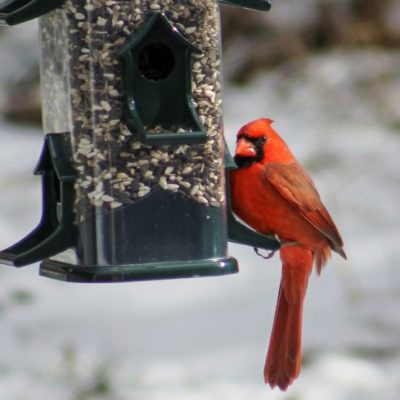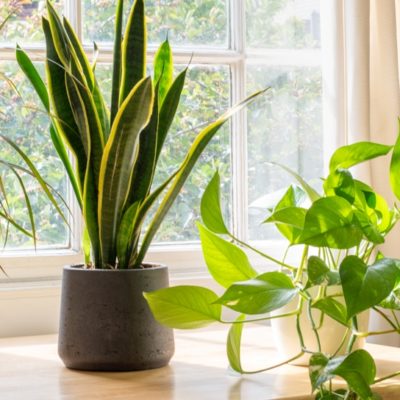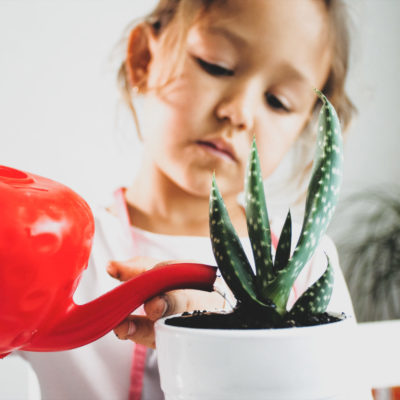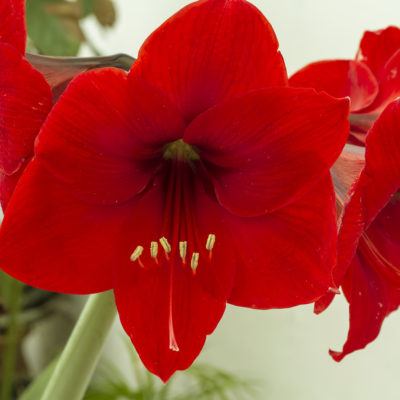
Houseplants in Autumn
Fall is a beautiful season: the leaves start to change, the days start to cool, and we all start getting our sweaters out of storage. The sun is also setting earlier and rising later, which means shorter days and less hours of sunlight. Such seasonal changes can affect the health and wellbeing of our beloved indoor houseplants; as the days shorten, our foliage friends will slow their growth and decrease their water requirements. It’s up to us, their human caregivers, to adjust the frequency of our watering schedules according to their needs. Some varieties may even benefit from a good fall trim to help with their adjustment.
As the days shorten the angle of the sun also changes (you may have noticed that the sunrise/sunset isn’t in the same spot in October as it is in July) and this means there’s less intense sunlight reaching the earth and our windows than during the hot summer. Indoor houseplants will sense this decrease in photosynthesis, and respond by slowing their growth to match the lower energy levels. But it’s not just up to them to adjust to this new season of lower light and longer nights: we also need to adjust our schedules to match their slower growth habits. Your Majesty Palm may have needed weekly deep waterings during the high intense sunlight of summer, but now that fall has arrived they may not need to see your watering can for 2 or even 3 weeks. Every plant and every pot is unique, and some varieties may use significantly less water in the fall and winter than others, so it is very important to change our watering habits to match their seasonal needs. Make sure to check the moisture content of the soil often, and watering deeply only when the plant needs it.
Autumn is also a great time to consider giving some tropical varieties a trim. Ficus, schefflera, and ivy varieties that grow multiple leafy stems may have had a big growth spurt over the long, high light days of summer. Trimming them back and pruning to shape will help the plants conserve energy and adjust to lower light levels; if left untrimmed, a lot of these plants will make their own adjustments by dropping their older foliage. Some tropicals, like snake plants, ferns, dracaenas, and palms, don’t need to be cut back at all.
Tropical plants that have been outdoors for the summer months need to be moved indoors before the temperature dips below 10 degrees Celsius, typically in early September. Hibiscus, bougainvillea, mandevilla, passion flower, jasmine, and other flowering tropical varieties thrive during the long, sunny days of summer and are often placed outdoors to soak up all those lovely UV rays before coming back inside for the fall and winter. After all those months out in the heat, humidity, and intense sunlight they will greatly benefit from a good pruning to help them adjust to living indoors once again; some light pruning over the winter will also help keep them bushy and lush. These sun loving tropicals will also show a big difference in their water consumption; they can go from needing daily deep watering in high summer to going every 5, 7 or even 10 days between waterings. As stated before, it’s very important to check the individual pot’s soil moisture and only water according to the plant’s needs. Keeping up the humidity levels, especially for these flowering varieties, will also benefit both their transition to indoor living and their new winter schedule. Mist their leaves daily and/or place bowls of water beneath their canopy to slowly evaporate up into their foliage.
Changing your watering schedule for fall and winter is incredibly important, and has been mentioned several times already for very good reasons. One of the most common problems that can arise from not adjusting your watering schedule is root rot, caused by overwatering or watering too frequently. This can be avoided by having pots with drainage, emptying saucers after watering, and making sure the plant is drying out between deep waterings. Do not allow plants to sit in water.
Repotting can be done at this time of year, but only if necessary and only increase your pot by one size. As the days shorten so does the plant’s growth rate, so it will take your plant much longer to grow roots in the later fall and winter than it does in the spring and summer. Many people prefer to repot more in the spring or early summer, using the longer days to give their newly potted plants plenty of time to grow their roots and absorb that gorgeous sunlight.





